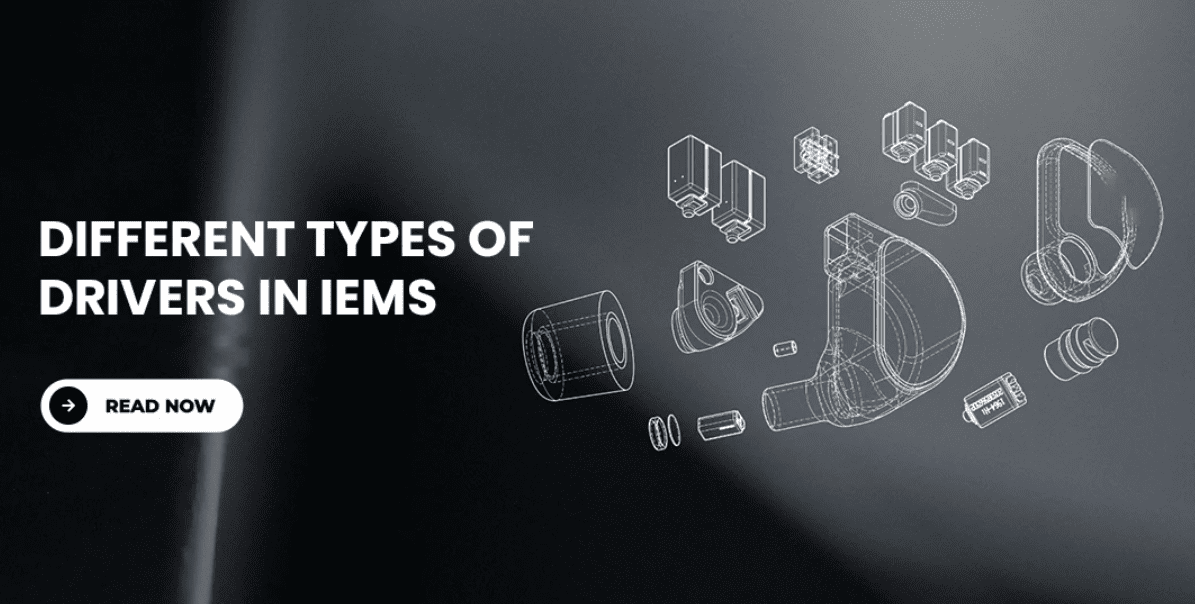No products in the cart.
News
The Different Types of Earphone Drivers and Their Impact on Sound
Earphone drivers are the heart of your audio experience, responsible for converting electrical signals into the sound waves that you hear. But did you know that there are different types of earphone drivers, each with its own technology and sound characteristics? This guide explores the most common types of earphone drivers, including dynamic, balanced armature, and planar magnetic, explaining their technology, sound characteristics, and ideal use cases.

1. Dynamic Drivers
Dynamic drivers are the most common type of earphone driver, found in a wide range of earphones from budget-friendly earbuds to high-end in-ear monitors. They utilize a relatively simple and cost-effective design, consisting of a voice coil, a magnet, and a diaphragm. When an electrical signal passes through the voice coil, it interacts with the magnetic field, causing the diaphragm to vibrate and produce sound waves.
Pros:
- Affordability: Dynamic drivers are relatively inexpensive to manufacture, making them a cost-effective option for a wide range of earphones.
- Efficiency: Dynamic drivers are generally efficient at converting electrical signals into sound, requiring less power to achieve high volume levels.
- Compact Size: Dynamic drivers can be made quite small, making them suitable for various earphone styles, including compact earbuds.
- Wide Frequency Range: Dynamic drivers can reproduce a wide range of frequencies, from deep bass to high treble, making them suitable for various music genres.
Cons:
- Sound Quality: While dynamic drivers can produce good sound quality, they may not offer the same level of accuracy, detail retrieval, or speed as balanced armature or planar magnetic drivers, especially at higher frequencies.
- Distortion: Dynamic drivers can be prone to distortion at higher volumes or with complex audio signals.
2. Balanced Armature Drivers
Balanced armature drivers are commonly found in in-ear monitors (IEMs) and hearing aids. They utilize a miniature armature that pivots within a magnetic field to move a diaphragm and produce sound. Balanced armature drivers are known for their efficiency, accuracy, and small size, making them ideal for in-ear applications.
Pros:
- Accuracy: Balanced armature drivers are known for their accurate sound reproduction, especially in the midrange and treble frequencies.
- Detail Retrieval: They excel at capturing subtle nuances and details in the audio, making them suitable for genres like classical music or jazz where detail is important.
- Efficiency: Balanced armature drivers are highly efficient, requiring less power to produce sound, which can contribute to longer battery life in wireless earphones.
- Small Size: Their compact size makes them ideal for use in in-ear earphones.
Cons:
- Cost: Balanced armature drivers can be more expensive than dynamic drivers, especially in multi-driver configurations.
- Limited Bass Response: Single balanced armature drivers may have limited bass response, requiring multiple drivers or hybrid designs to achieve a full and balanced sound.
3. Planar Magnetic Drivers
Planar magnetic drivers are a less common but highly regarded driver technology. They utilize a thin, lightweight diaphragm suspended between two magnets. When an electrical signal passes through a conductive pattern on the diaphragm, it interacts with the magnetic field, causing the diaphragm to vibrate and produce sound waves. This design offers several advantages over dynamic drivers.
Pros:
- Sound Quality: Planar magnetic drivers are known for their accurate and detailed sound reproduction, particularly in the midrange and treble frequencies. They offer improved transient response and lower distortion compared to dynamic drivers.
- Wider Soundstage: Planar magnetic earphones often have a wider and more spacious soundstage, creating a more immersive listening experience.
- Speed and Accuracy: Planar magnetic drivers are known for their speed and accuracy, making them well-suited for fast-paced and complex music genres.
Cons:
- Cost: Planar magnetic drivers are more expensive to manufacture than dynamic drivers, making planar magnetic earphones generally pricier.
- Size and Weight: Planar magnetic drivers tend to be larger and heavier than dynamic drivers, making them less suitable for compact in-ear earphones.
- Power Requirements: Planar magnetic earphones often require more power to drive them effectively, which can affect battery life in wireless models.
Conclusion
Understanding the different types of earphone drivers can help you appreciate the nuances of audio technology and make informed decisions when choosing earphones based on your sound preferences and budget. Each driver type offers unique advantages and disadvantages, and the best choice for you will depend on your individual needs and priorities.
Do you have a favorite earphone driver technology? Share your thoughts in the comments below!
Related Articles
- How to Choose the Right Earphones for Your Ears: A Comprehensive Guide
- Best Earphones for Music Production: Hear Every Detail
- Understanding Headphone Specifications
